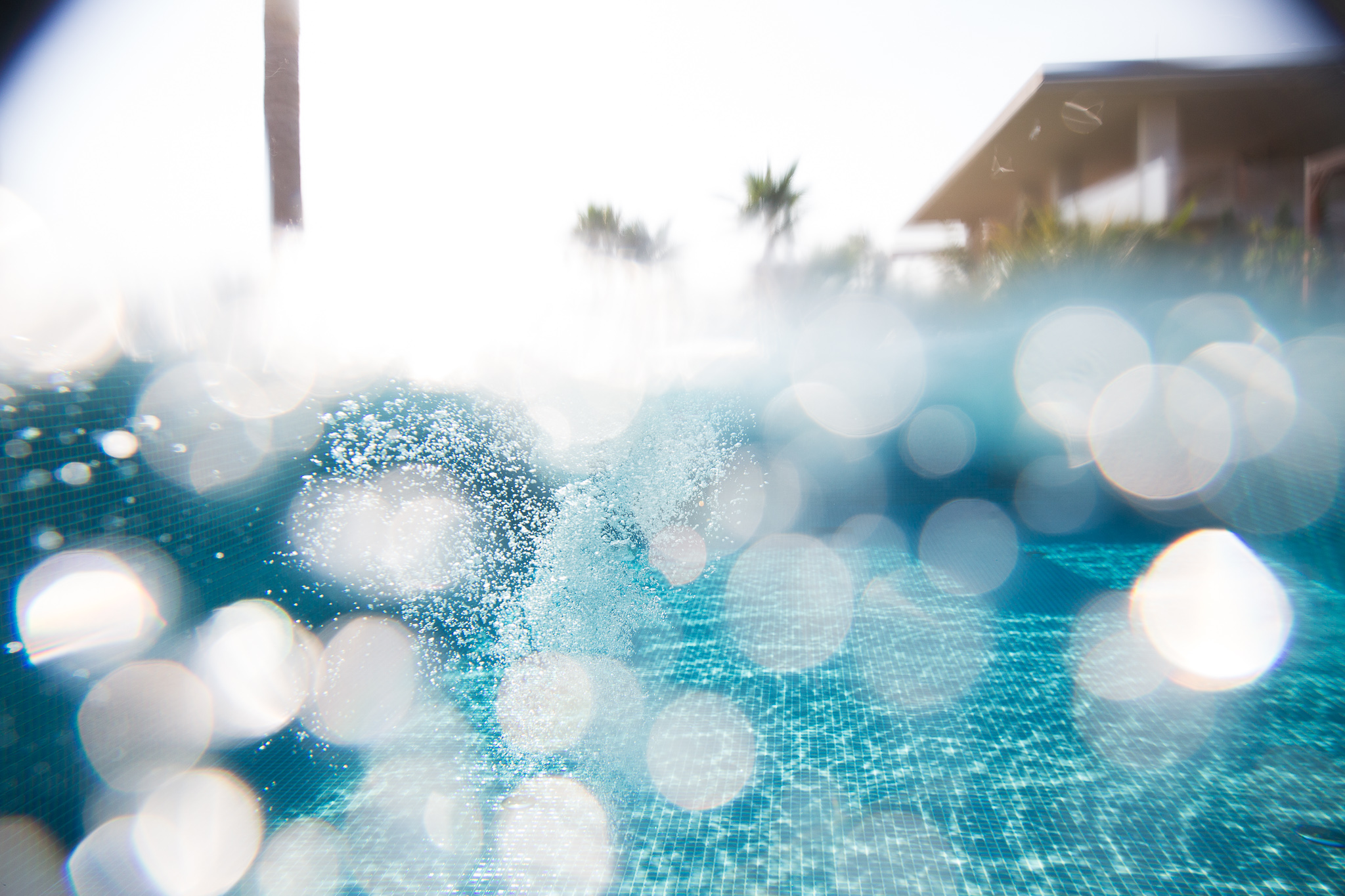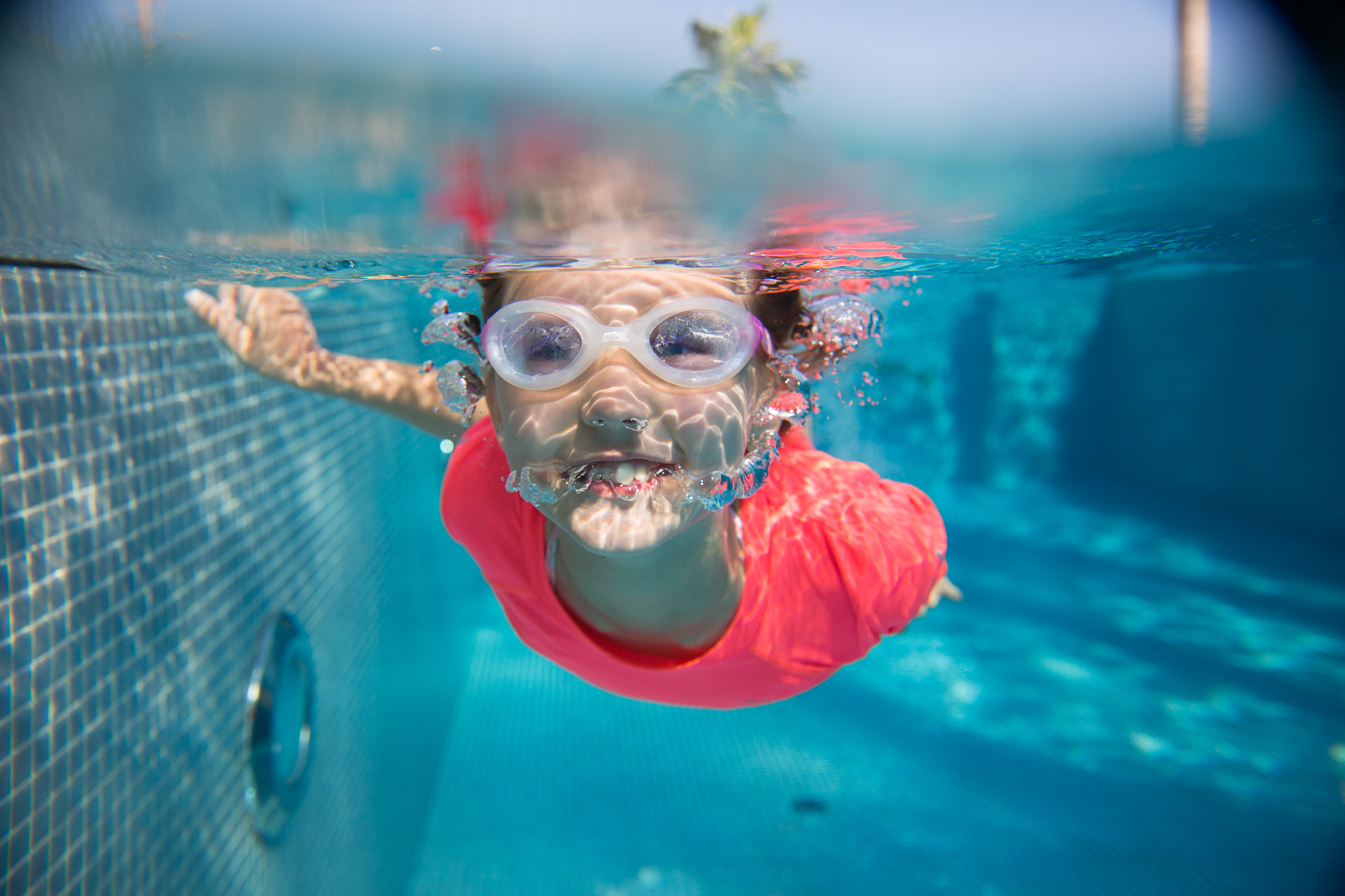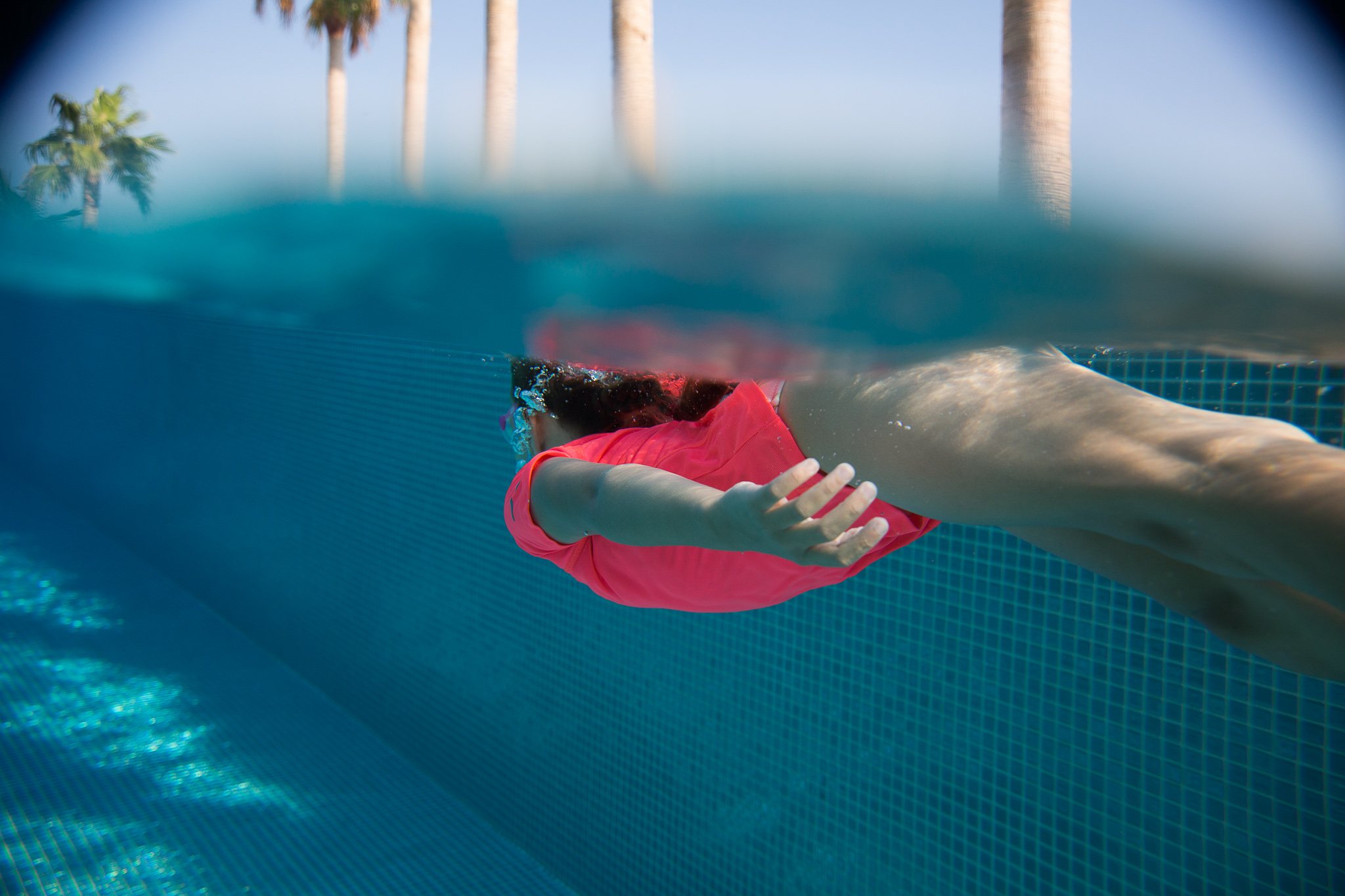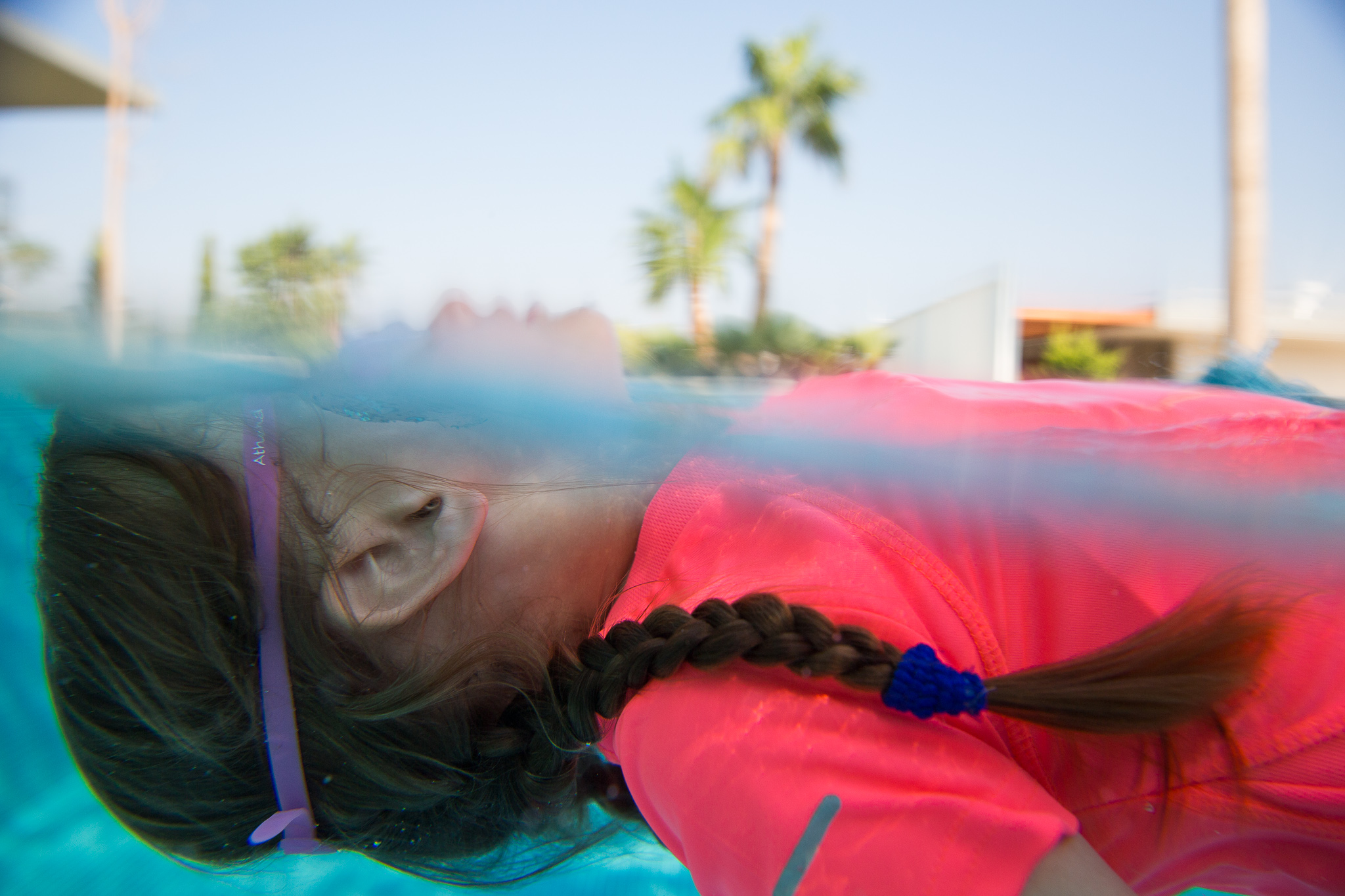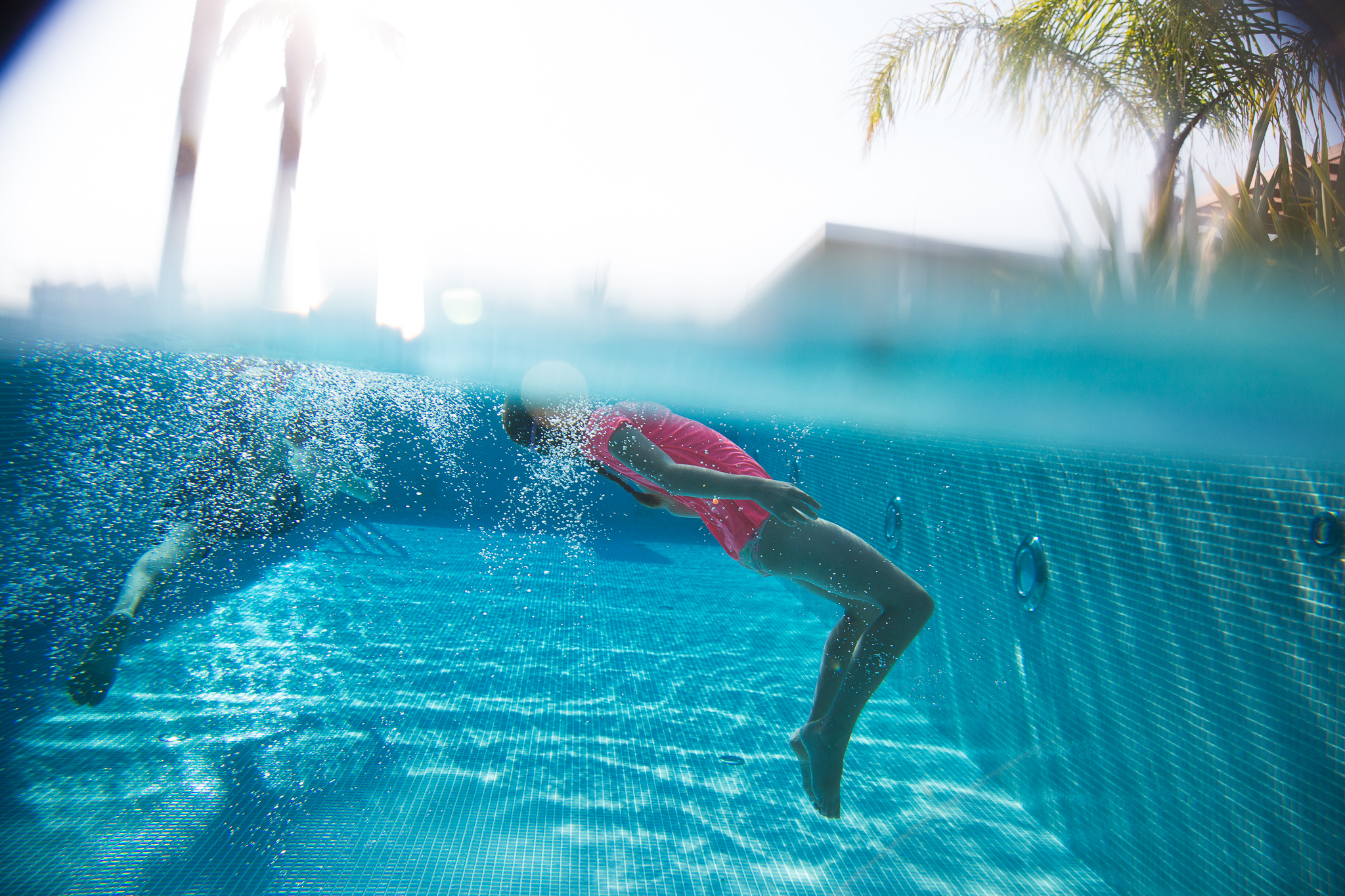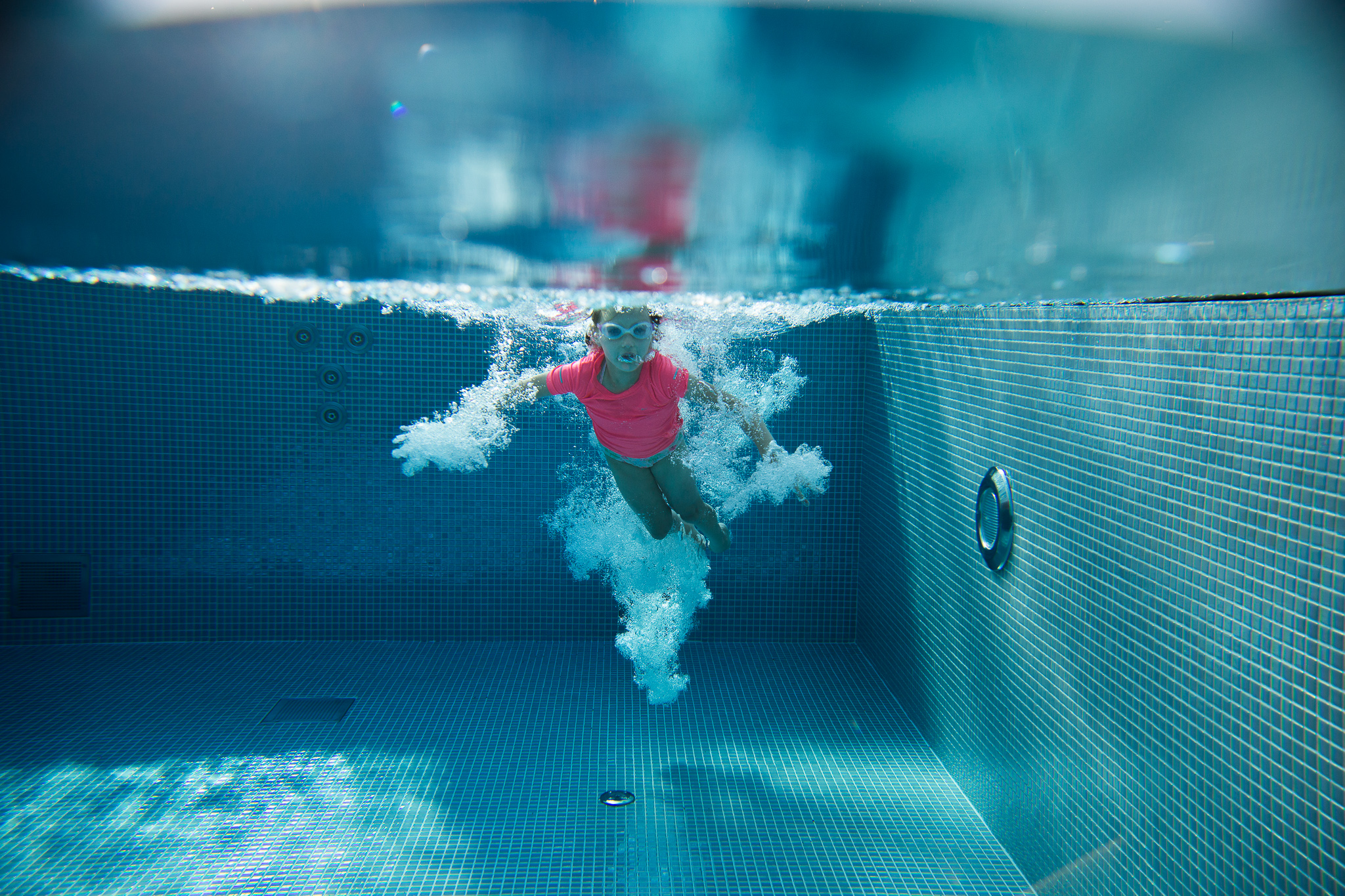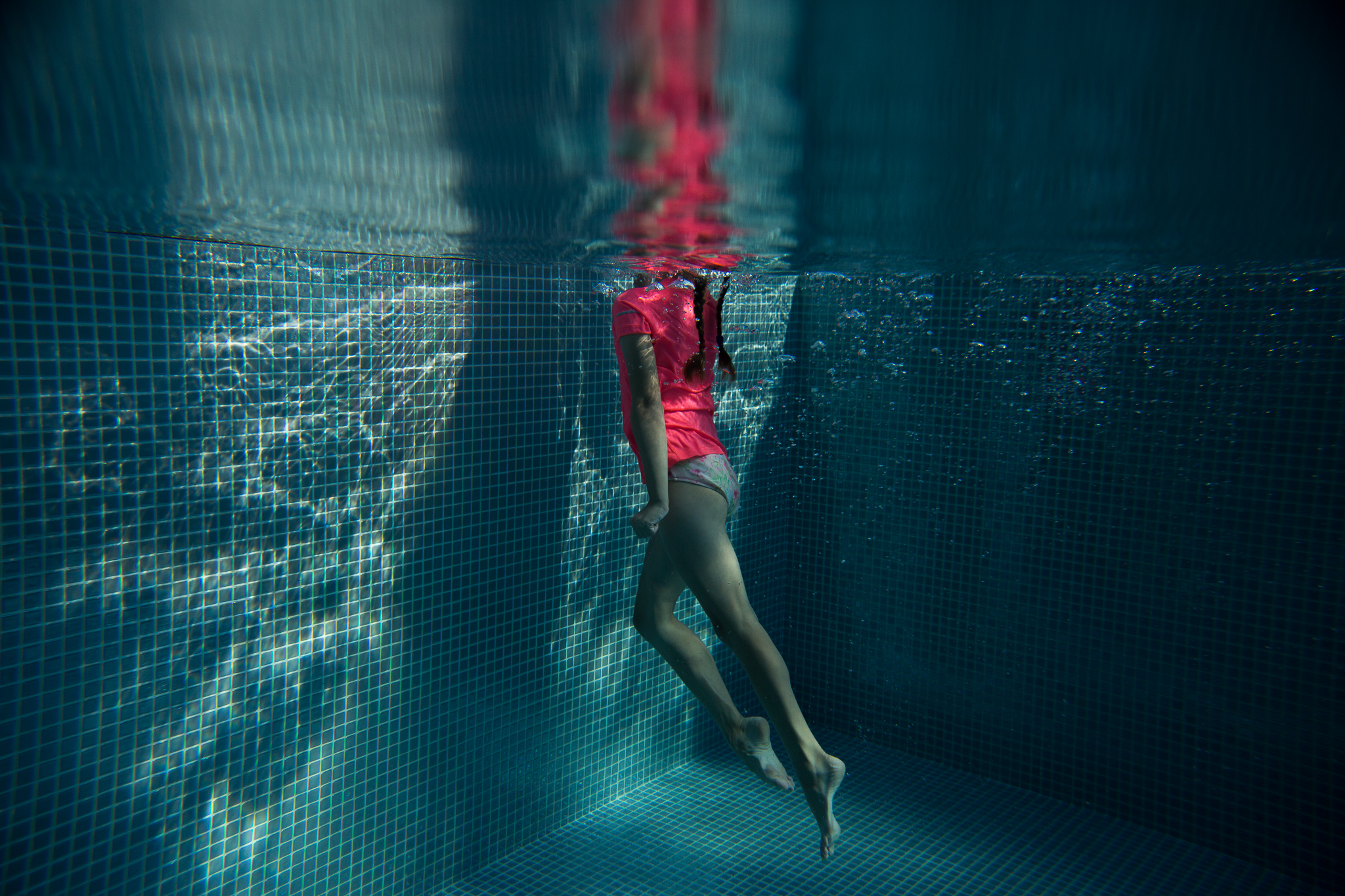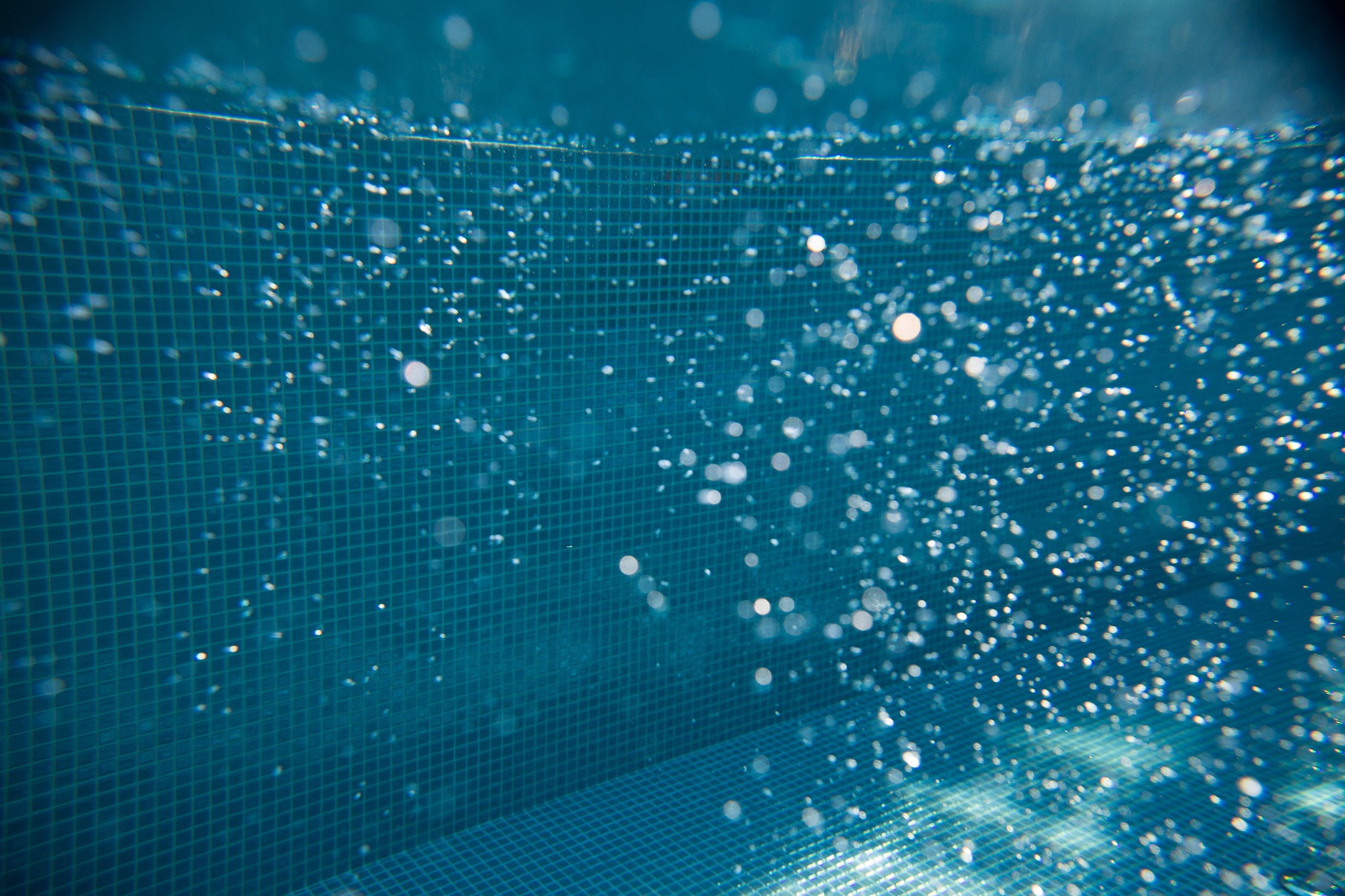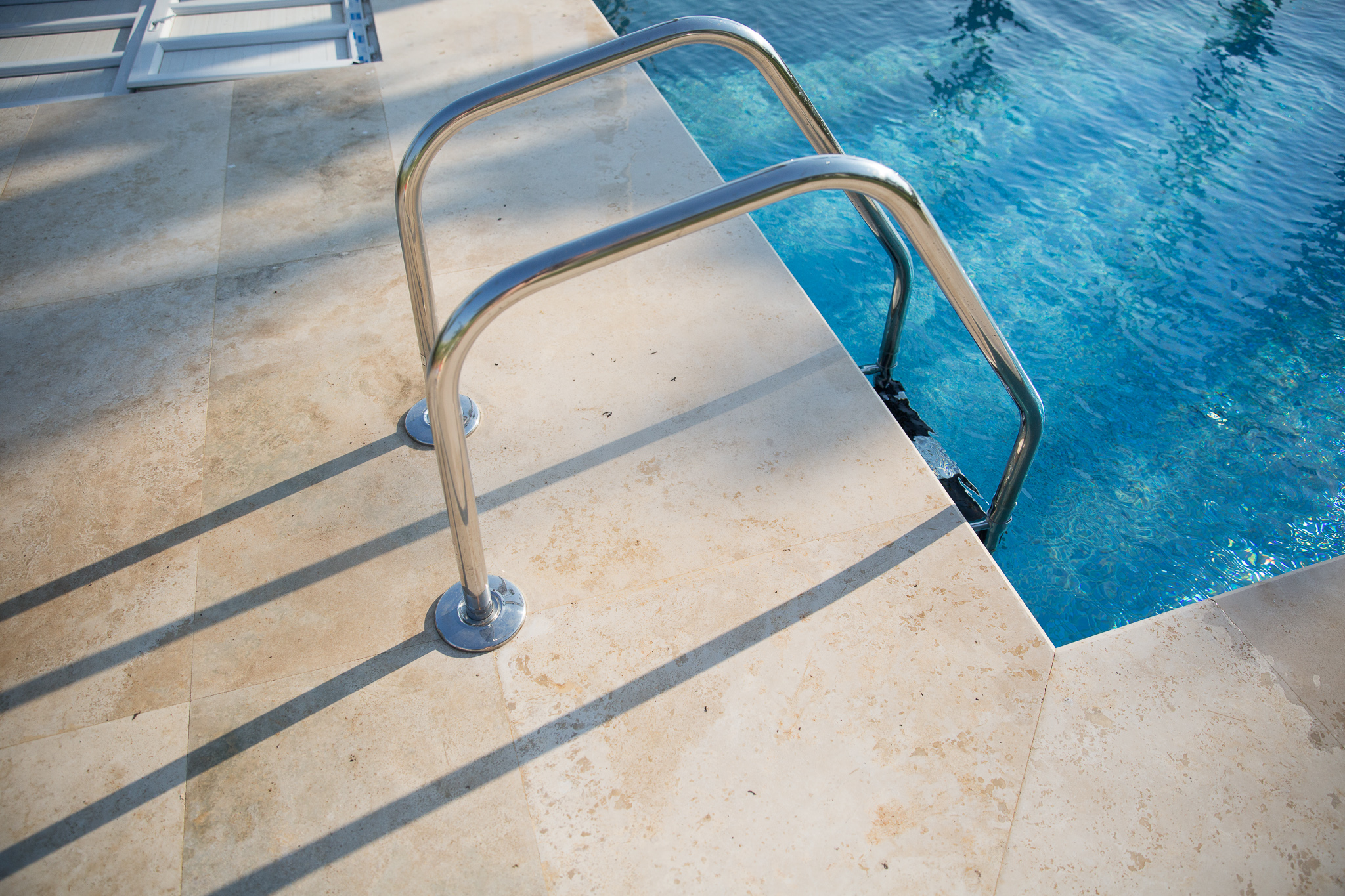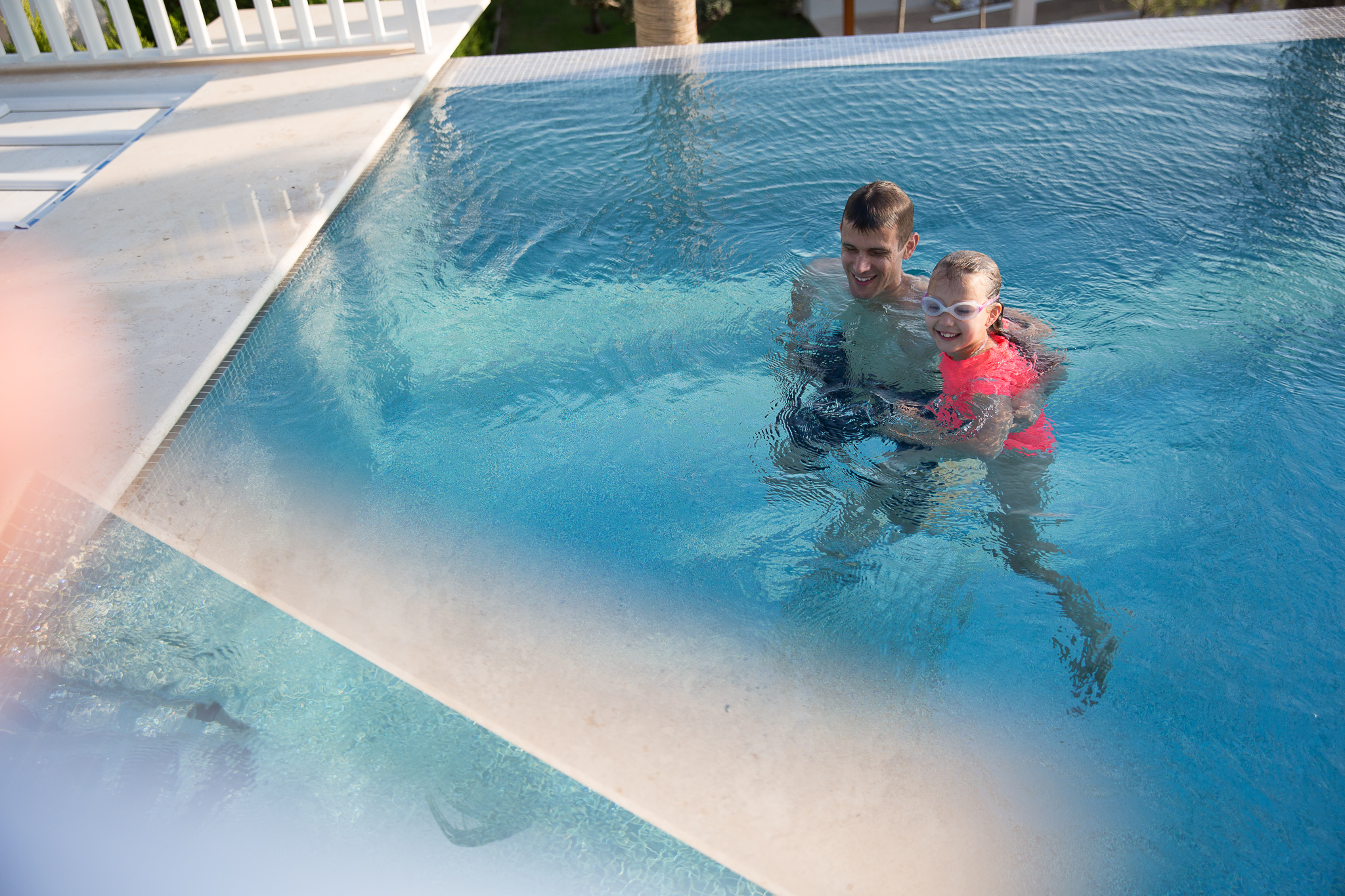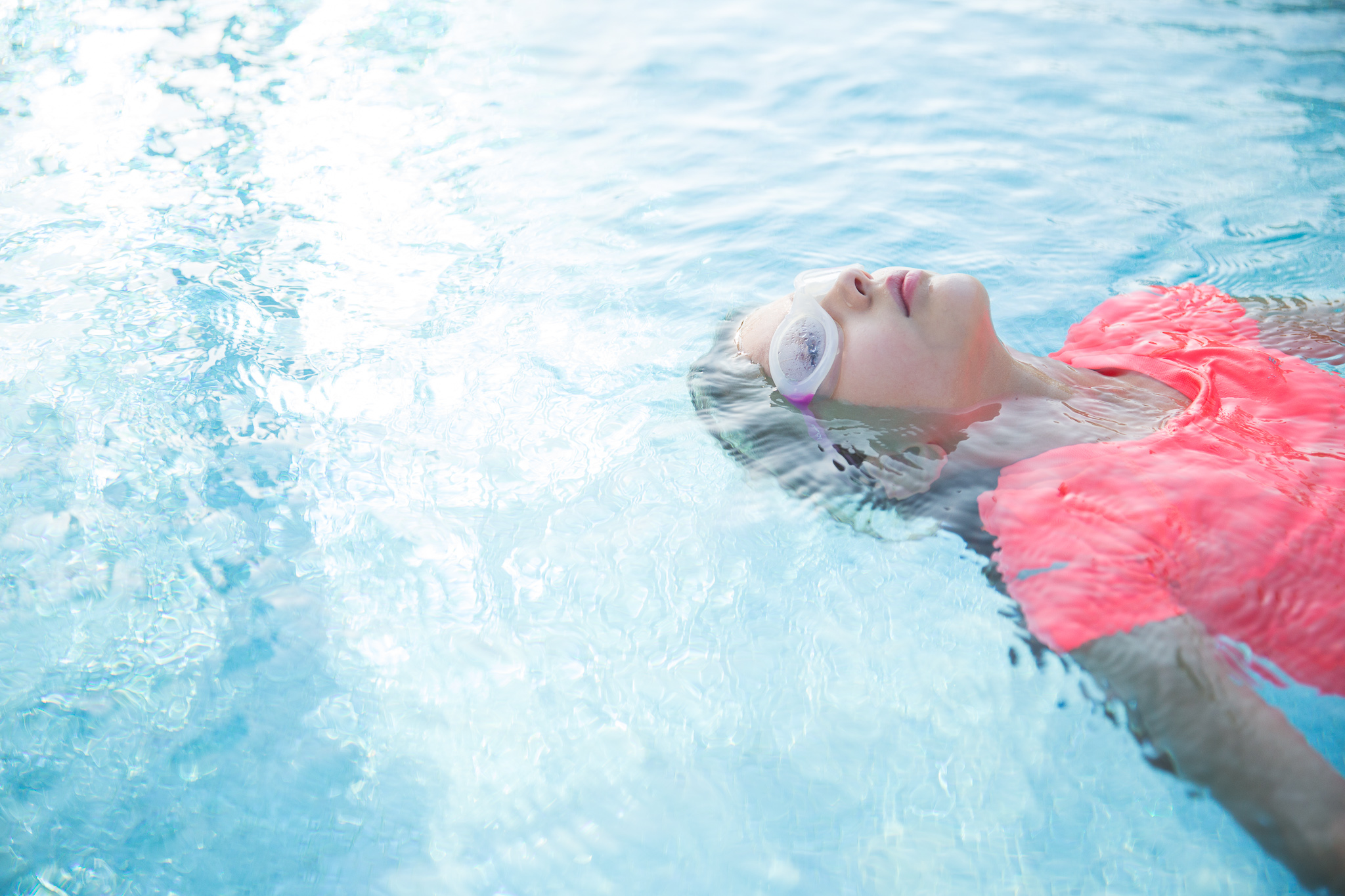Simple Tips for Photographing Underwater
I do love a challenge and trying different techniques to pull me in new directions. For this reason underwater photography is so much fun. I don't get a chance to practice often in England, and I don't think the people at local swimming pool will look kindly on my large and imposing Dicapac underwater housing. I’ve only had a handful of holiday attempts, and I’ve found a few things that work for me:
Check your underwater casing has no leaks first using a piece of tissue and submerging it in a bath of water. The last thing you want is to damage your expensive big camera. (I have to confess I’m too darn lazy to do this, but I strongly advise you to! Ha Ha!) I have never had any leaks, but it can happen.
Use a lens with a wide angle. A 24mm to 35mm is good. For these images I used my Canon 24-70 f2.8 set to 24mm. You need to get close to your subject so they are as clear as possible, but at the same time you also want to get the rest of the pool in.
Sometimes the rim of the casing can get in the way of the frame and you need to hold it back out of the image using your left hand while you are shooting.
Set your exposure using the pools surface water before you put it in the casing. This may change underwater, but it gives you a close starting point.
Some people shoot in AV or TV mode, but I’m so used to Manual mode that I just find it easier. It’s a bit fiddly trying to adjust settings though the plastic casing at first, but you get used to it.
The most important thing is that you need a clear pool! Sounds so simple, but it really makes a world of difference. In a murky pool you can’t see a thing, and you will need to shoot on the surface, only slightly submerged. If the water is clear and you have a wide angle lens you will need to do very little editing afterwards as I have done with this set. Some underwater images are heavily edited to the point of not looking like the subject is underwater at all, but floating like an orange Oompa Loompa in space. As with all my photography, I prefer my images to look as natural and as close to the SOOC (straight out of the camera) image as possible. For me I believe the art form is in the quality of the actual image taken in camera, understanding the opportunities of the given natural light, and not in heavy handed post processing.
This is something I’ve not yet managed to do, but if you can get some goggles and a snorkel. It’s kind of hard to breath and see underwater!
Most importantly relax have fun! Expect to take hundreds and don't be shy. Most images will fail, as you have little control underwater. You need to let go a little, and not be disappointed when they don't succeed. My first underwater photographs were rubbish. But my heart sings for just that one little shot that makes it.
I once heard a well known street photographer say, “The difference between the amateur and the professional photographer is persistence”.
Never give up. Keep trying. xx
